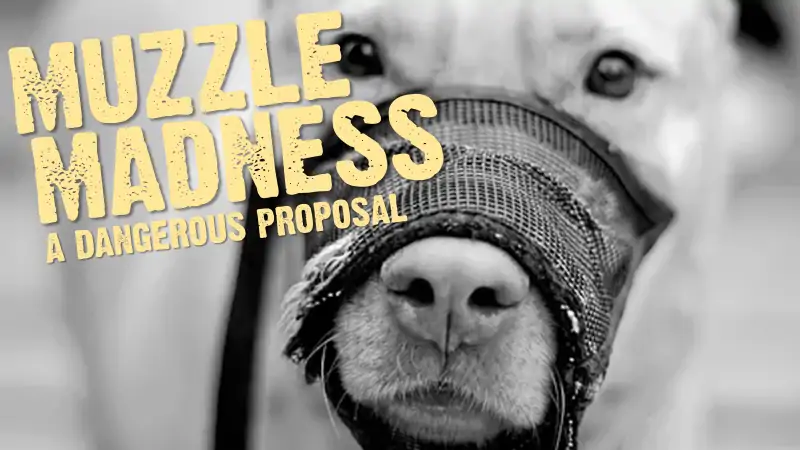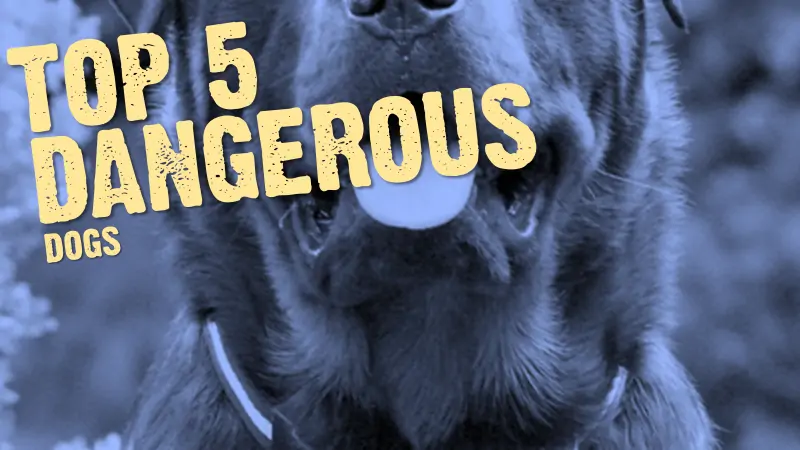Dog owners world-wide are told by many leading dog behaviour therapists and trainers to believe that their pet’s ultimate desire in life is to be top dog. So much so that Rover is probably plotting to take over the household at his earliest convenience.
In most books on canine behaviour, they tell us our dogs are motivated by dominance and long to be ranked at the top of his human-dog pack. We’re told too that these motivations are the root of most behaviour problems.
But according to Sara Whittaker, head of one of the UK’s largest and most comprehensive animal behaviour and training practices, WitsEnd®, dominance is probably the most inappropriately used word in the dog world today.
Following a study of over 1,500 behaviour consultation cases, Sara challenges the validity of the popular dominance-rank theory. She questions the use of rank-reduction programmes to modify unacceptable behaviour by “demoting” our dogs to the bottom of the family pack, often involving removal or reduction of rewards, and argues that in the long term they have serious and damaging consequences for the essential dog-human bond.
She claims that our pets aren’t pushing the boundaries in their home to dominate us, but are driven to do so because they enjoy pleasure. The search for pleasure and the associated release of neuro-chemicals, such as dopamine, in our dogs’ brains is the real motivation – they are simply reward seeking missiles!!
Many leading animal behaviourists tell you to look to the wolf to understand why our pet dogs behave the way they do. Whilst it is true that both the wolf and domestic dog lives by the over-riding lupine principal of social co-operation, policed by competition for ownership and reward, and maintained through advanced forms of communication (facial, body postures, vocal and pheremonal), we shouldn’t draw direct comparisons when considering issues of dominance and rank.
Dominance behaviour in wolves is usually connected with reproduction and is therefore only really observed in the adult wolf. Because the development of domesticated dogs has been arrested through selection, change of environment and their new inter-relationship with man, our pets are essentially juvenile wolves and will never reach maturity where dominance behaviour as seen in the wolf is exhibited.
So why has the dominance-rank theory gained such credibility? There has been widespread diagnosis and treatment of dogs with unacceptable behaviour problems using this theory. The dog is believed to be challenging its rank in the family pack and exhibiting dominance aggression, control or bullying to gain promotion. Rehabilitation to treat so called “dominant” behaviour normally involves taking the dog “down a peg or two”, removing all or most privileges, controlling rewards and shutting off free access to the whole territory (house and garden). The dog is in effect demoted and made subservient to the owner and other family members.
Successes reported by those using this approach have pointed to there being some validity to the theory. But owners who follow rank-reduction programmes religiously actually see a worsening of the problem. Success has, in my opinion, only been achieved where owners have focused on control of rewards rather than their removal and restriction of access.
By having a simple rule that the dog must earn food, treats, toys etc, by performing simple tasks or preferred behaviour, the dog’s hedonic (pleasure) budget is unaffected. In fact, the owner becomes a source of reward, replacing the dog’s need to attain pleasure elsewhere or through alternative and sometimes, unacceptable actions.
There are also cases where changes in a dog’s emotional state are considered a success. For example, the very lively, over-bearing, attention seeker becomes sullen and quiet through the removal or restriction of its sources of pleasure. The question we should ask is whether the dog has learned to behave in a different way or is he simply feeling differently about his circumstances? Also, is the result long-term or will the dog eventually seek out rewards in other areas? And finally, is this really a success for the dog?
Our research shows that not only is rank-reduction treatment unsuccessful, but it often results in a serious weakening of the dog-human bond. If you look at the effect of access restriction, removing privileges or completely overhauling the living rules, the underlying emotion for the dog could be fear, sadness, a feeling of insecurity and even of grief.
The emotional turbulence of sudden differences in the home and of changes in the owner’s approach could potentially have a direct effect on the dog’s outward behaviour. It could make it more eager to please, less willing to participate in family activities, sulky, sad, depressed, angry, frustrated and could possibly even lead to a state of learned helplessness. The list is endless and totally dependant on the individual make-up of the dog. It is true that some of these emotional responses may appear to have some benefit, but equally others have an overall detrimental effect on the dog’s behaviour.
Another reason for the prevailing commitment to the rank-reduction theory is the apparent rank formation in multi-dog households. But we should remember that as juvenile wolves, our pet dogs aren’t motivated by reasons associated with social hierarchy. Our dogs’ behaviour is related to their emotional state, which in turn is affected by the availability of pleasure resources. And it is worth noting that what is internally and externally rewarding for one dog depends on its breed, past learning experience and personality. Each dog will value rewards differently and gain varying degrees of satisfaction dependant on the resources available at any one time.
For example, a GSD who considers the top of the stairs to be the best position could lie happily there, watching a Jack Russell floundering at the bottom. But the Jack Russell could be working at his bone at the bottom of the stairs, convinced that his was the better place and occupation. Without understanding the emotional state and reward system of each dog, is it right to judge the GSD as more dominant and higher up the pack ranking? If both dogs valued the top of the stairs as the best position, it is likely that they would compete in order to increase their chances of reward. A mistake many behaviourists make is to interpret this as dominant behaviour and suggest it’s a battle for rank within the “pack”.
Problems with dog-to-dog aggression and food or toy guarding are also highly misunderstood. In the case of dog-to-dog aggression, possibly initiated in the first instance through fear or frustration, the behaviour is often perpetuated not in an act of dominance but because the dog has learned that it can achieve a heightened sensation of pleasure from his actions. In this instance, the problem behaviour becomes self sustaining and is in itself internally rewarding.
We might presume that a dog guarding his food, treats or a toy, is telling us that “it’s mine and you’re not having it”. Most behaviourists still diagnose the problem as dominant behaviour and typically treat it using rank-dominance programmes with an emphasis on controlling these resources. Owners should be warned however, that this may only be successful in mild cases where the underlying motive is perhaps one of eliciting attention. In “real” cases, this approach can very quickly make the problem much worse.
The reason for this is simple. By viewing the problem with the dog’s emotional state in mind, we can see that guarding comes from an inability to cope with loss or potential loss. The actual or possible threat of removal of a reward can lead to disappointment, and a dog becoming highly aroused with an immediate and charged response of frustration and rage.
So if an owner removes or controls the availability of food, treats or a toy using brow-beating techniques in order to control “dominant” behaviour, we can predict that this may result in spontaneous outbursts of negative emotions and an even greater desire to keep the pleasure resource at all costs.
Dogs such as Border Collies, Springer Spaniels and Cocker Spaniels, who are bred to work but live in pet homes where work or alternative stimuli are not provided, are susceptible to the same emotional reactions. Without a fix of neuro-chemicals released in the brain when stimulated by appropriate pleasure resources – in this instance the innate desire to work – the problem will remain unresolved.
But if rank-dominance programmes are not the solution, then how do we modify our dog’s bad or unwanted behaviour? To tackle these problems, we have to treat the underlying emotion, deliver on the dog’s desires and deal with the learned aspect. In doing this, it’s essential we take a holistic approach to assessment, looking at past learning, owner influences, breed type and neuro-chemical alignment.
By simply changing the dog’s diet to increase synthesis of serotonin in his system, more reward neuro-chemicals are present. This in itself is not enough however and the hedonic (pleasure) budget of the dog must be assessed, with adjustments made where possible to the dog’s number and source of rewards to ensure regular and appropriate levels of dopamine release.
To help the dog to learn to control its own emotional state, a treatment plan often involves instigating clear signals of success (when positive behaviour is associated with an external reward) and failure (when bad behaviour is halted before a negative emotional state of frustration or rage, or inward reward, is achieved).
The use of a clicker can be helpful to signal success and to teach a dog to unlearn the learned aspect of unwanted behaviour. This is achieved by teaching the dog to behave positively on cue, for example by releasing his toy or returning to you when called, for either a food treat or other tangible reward valued highly by your pet. A click on the clicker pin points the moment of happy emotional response and coupled with the treat removes feelings of disappointment. The clicker also becomes a signal that a reward is coming, so its sound alone can evoke feelings of pleasure and success due to its conditioned association with reward.
My thinking isn’t new and there are a rising number of behaviourists practicing the basic principles of this reward-based approach to tackle behaviour problems. Dog owners are still yet to be persuaded that the rank-dominance theory has no validity and that our dogs aren’t plotting terrorists waiting for an opportunity to take over our households. But through public example and demonstration of long term successes there is hope for a happier, more satisfying relationship for owners and their dogs, that’s based on increasing rewards not reducing them or limiting access.
So for those of us who don’t want to rule our dogs with a rod of iron, we can find comfort in the fact that in reality anything goes. Letting our dogs sit on the furniture, lie on the bed, eat before we eat, walk through doors before we do, help themselves to toys from the toy box, ask for attention won’t result in a “dominant” dog and contribute towards unrelated problem behaviour, as we’ve been told many times before.
Rules are good in the home and our dogs will be happy to live by them, but there’s no hard and fast convention to say what’s right for you and your dog, just good advice that says we should stick to them without compromise. After all, inconsistency of signals leads to a change in the emotional state of the dog, resulting in confusion and frustration. A truly happy dog is a well behaved dog, and that makes for a happy human-dog relationship.
————————————————————————————————————————————
: Look out for a series of behavioural case studies to accompany this feature – coming soon :
———————————————————————————————————————————–
About the Author
Sara Whittaker practices behaviour therapy at her Leicester and Ely-based business, WitsEnd, where she reviews between 300 and 450 cases annually.
Qualified with a diploma in Companion Animal Behaviour Therapy (DipCABT) and a former student of prominent behaviourists Peter Neville, John Fisher and Robin Walker, her achievements include a 95% success rate using the reward-based approach, with the majority (3%) of failures attributed to a lack of owner commitment to sustain recommended modification programmes.
An accomplished author of articles for leading dog magazines and regular monthly guest on BBC Radio Leicester since 1997, Sara has filmed behaviour consultations and a series of three short case histories at RSPCA Woodside for Pet Rescue.
In addition, Sara is a lecturer at The College of Animal Welfare, Anglia Polytechnic University and Brooksby Melton College. She lectures students, the general public and veterinary professionals on a range of subjects, including dog and cat behaviour, setting up a business as a dog trainer or pet therapist, running professional puppy classes, typical behaviour problems in cats and dogs, and on clicker training.
Enter your email and never miss out on receiving our best articles:




